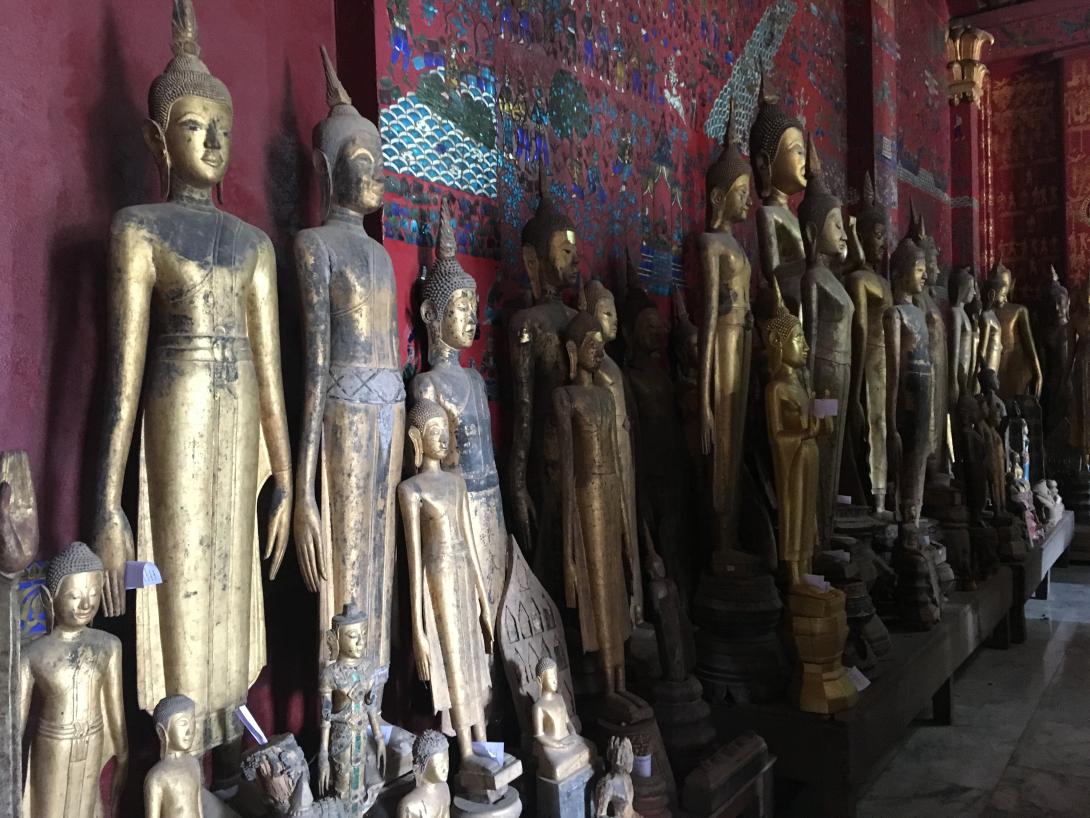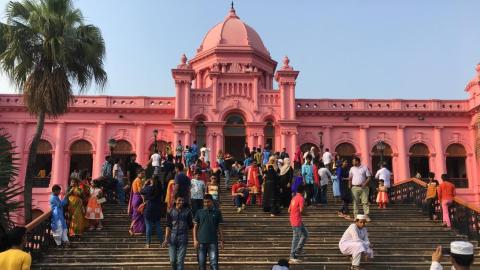Laos
Laos remains one of the less represented South-East Asian countries in international contemporary art contexts. However, the landlocked country is enriched with a diverse cultural output from a range of ethnicities and traditions, as well as a thriving textile industry. Alongside this is a small but highly motivated group of experimental artists creating work — sometimes deliberately kept from public view — that captures aspects of contemporary life in Laos and explores the country’s complex history. Traditional painting has remained popular and is still the primary practice taught in art colleges, although a group of young artists equipped with the tools of media and technology promises to disrupt this dominance.

Buddhist sculpture in Luang Prabang / Photograph: Tarun Nagesh
While public arts infrastructure is in a rather dire state in Laos, and the National Museum was indefinitely closed at the time of visiting, several smaller organisations and locations enliven the capital city of Vientiane. The well-attended COPE Visitor Centre is an educational and resource centre that tells the history of the air strikes that have left the country scarred and the continued presence of unexploded ordinances, a subject explored by some of the country’s leading artists. The markets along the Mekong River in Vientiane have been a hub for locals to sell paintings in the past, but, in recent years, a spattering of small galleries and artist-run spaces have sprung up around the city, providing a platform for more experimental practices among a collection of textile galleries.
The former royal capital of Luang Prabang is a small picturesque city perched on the river between the hills and dotted with historic Buddhist temples, many of which house collections of Buddhist sculpture among expansive murals. The city is a centre for textiles drawn from different ethnic groups from around the country, and textiles and crafts are abundant in the galleries that line the main streets. The lively night markets offer fine examples of embroidery from the Hmong community, who gradually settled in the city from the mountains further north. The advent of narrative textiles draws on the country’s history of migration and conflict, and skilled artists making experimental works are beginning to make their mark in broader contemporary art contexts.

Looms at Ock Pop Tok Living Crafts Centre, Luang Prabang / Photograph: Tarun Nagesh
APT9 represents Laos-based artists for the first time in the triennial’s history. The works of three artists demonstrate the diverse practices and changing approach to art-making in a small but exciting context — one where forms of art are often evolving outside conventional galleries, capturing and conveying the contemporary reality of life in Laos.
Tarun Nagesh, Associate Curator, Asian and Pacific Art.

